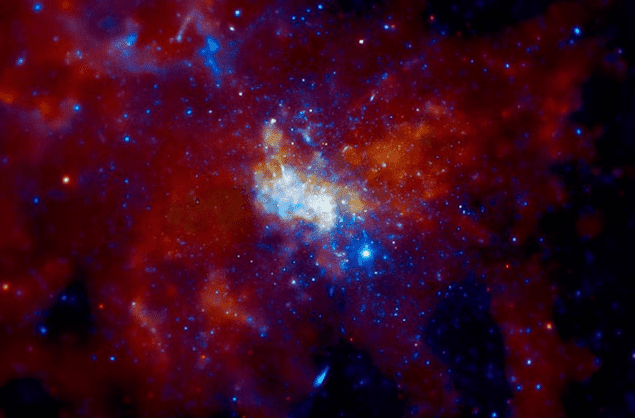
Following the release of the first image of a black hole from the Event Horizon Telescope (EHT) earlier this month, astronomers are now hoping the project can achieve another of its core aims: to produce a similar portrait of the environment near the black hole at the heart of our galaxy, dubbed Sagittarius A* (Sgr A*).
While we wait for those elusive images, some scientists – including several members of the EHT team – have been devising a new approach for capturing views of this enigmatic region. Their idea is to exploit a constellation of satellites to produce images that can reveal much more detail than can be recorded by the EHT’s current network of ground-based observatories.

First images of a black hole unveiled by astronomers in landmark discovery
A group led by Freek Roelofs of Radboud University in the Netherlands have now simulated the images that could be created of Sgr A* and its immediate surroundings by the proposed mission, called the “Event Horizon Imager”. While the EHT exploits a coalition of millimetre and sub-millimetre telescopes scattered across the planet, the space-based Event Horizon Imager would consist of multiple satellites – each one fitted with a dish capable of collecting sub-millimetre radiation – in orbit around the Earth.
Just like its pioneering ground-based forebear, the Event Horizon Imager would use interferometry to create detailed views of Sgr A*’s shadow and the plasma swirling near it. The technique would need two, or perhaps three, spacecraft – separated by as much as 25,000 km – to observe their target simultaneously. By carefully analysing and combining the data gathered by the individual telescopes, the collection of relatively small spacecraft could produce images with a similar resolution as could be achieved from one, vast, orbiting dish.
Since the Event Horizon Imager would be free from the distorting effects of atmospheric water vapour, it could make observations at frequencies as high as 690 GHz – much higher than the Event Horizon Telescope’s typical observing frequency of 230 GHz. “The angular resolution of a telescope increases linearly with observing frequency. Combined with the long baselines [the projected distances between the telescopes], this gives the Event Horizon Imager a resolution that is more than five times better than the attainable resolution from the ground at 230 GHz,” explains Roelofs.
Crucially, observing at such a high frequency also gets around the issue of interstellar scattering – one of the main hindrances to studying Sgr A* at lower frequencies. “Interstellar scattering is caused by material that resides in the interstellar medium [the space between the stars] between us and the Galactic Centre,” explains Roelofs. “The radio waves coming from near the black hole are distorted by electrons in the interstellar medium, causing the observed image to be blurred, as if we are looking through frosted glass. Above 500 GHz the effect is negligible.”
Having detailed views of the supermassive black hole right on our doorstep should offer astronomers important insights into some of the key ideas underpinning modern physics. “Sgr A* is particularly interesting for high-resolution imaging because its mass and distance are well known,” explains Roelofs. “By measuring the angular size of the black hole shadow, we can test general relativity and other theories of gravity to high precision.”

Radioactive glaciers, Mars methane mystery, and more on the black-hole images
Not only that, but if the Event Horizon Imager were turned toward supermassive black holes with jets in other galaxies, researchers may be able to glean more clues about how those streams of material are ejected.
“Computer models and general relativity make predictions about how plasma flows around, into and away from the black-hole event horizon, and how this emission varies over time,” says Andrew Young, an expert in high-energy astrophysics at the University of Bristol, UK, who was not involved in the new study. “The finer details of these predictions vary depending on things like how fast the black hole is spinning, the configuration and strength of magnetic fields, and how the gas is flowing towards the black hole. But to see these details, and really put the theories to the test, requires much higher resolution than even the Event Horizon Telescope.”
The full study is published on arXiv.



